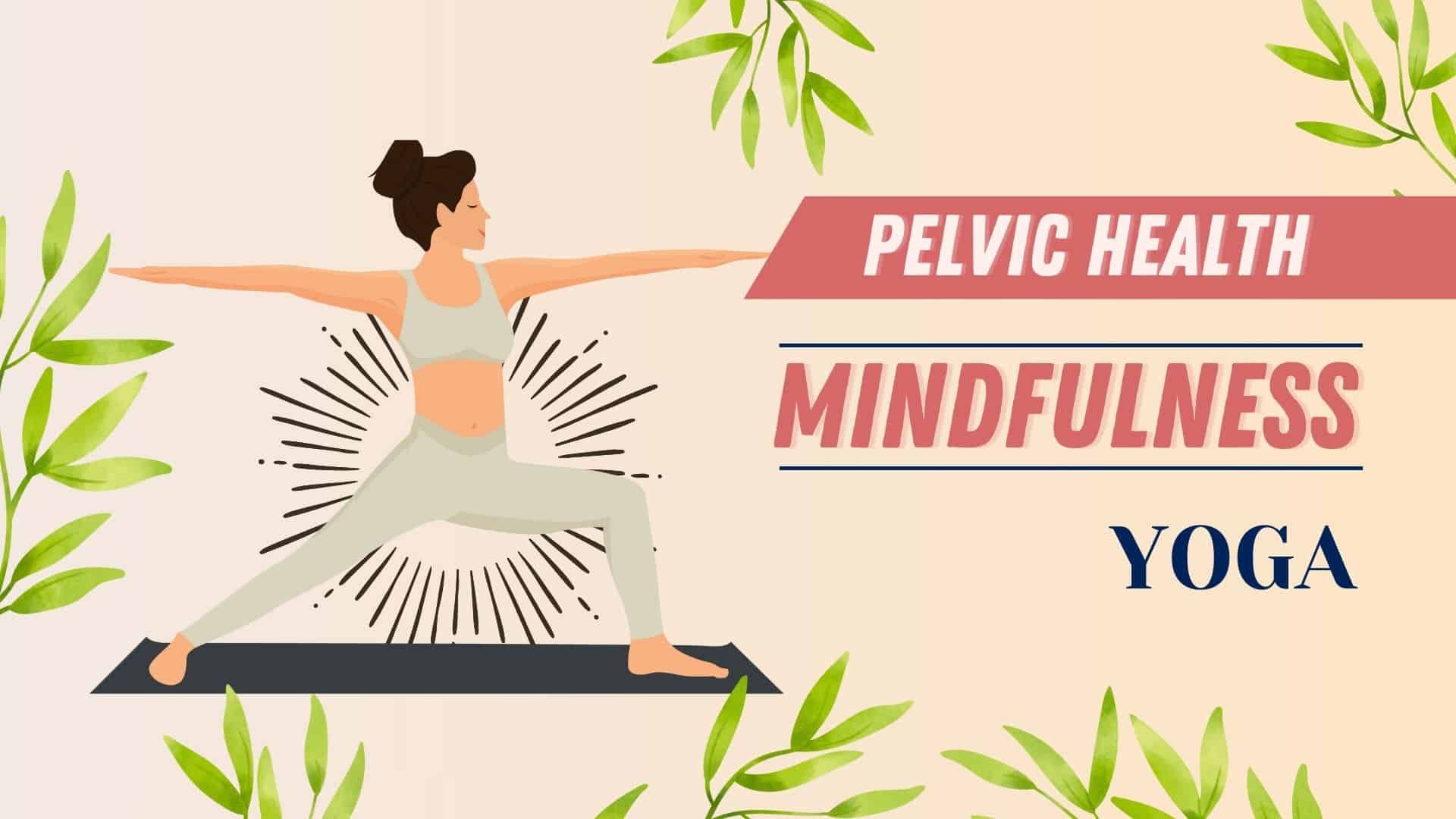Using Mindfulness to Enhance Pelvic Health: Evidence-Based Practices
Have you ever felt a nagging discomfort in your pelvic area that just won’t go away? You’re not alone. Millions of people worldwide struggle with chronic pelvic pain. For many people with pelvic health issues, this feeling is all too familiar. It can be frustrating when traditional treatments fall short. But what if I told you there’s a powerful tool within you that could help? Mindfulness is a practice that can change lives and transform your pelvic health.
Picture this: You’re sitting quietly, focusing on your breath, and suddenly, you notice the tension in your pelvic floor start to melt away. It sounds simple, but the science behind this is profound. Mindfulness isn’t just a catchphrase; it’s a proven method for reducing stress, managing pain, and improving overall well-being.
Did you know that persistent pelvic pain affects 7% of adults and limits their daily activities? In Canada, where healthcare innovation is always on the horizon, yoga and mindfulness are becoming a valuable addition to pelvic health treatments. People are discovering how this ancient practice can relieve pelvic issues in the modern day.
Let’s explore how being mindful can be your best friend in enhancing pelvic health. We’ll uncover how these evidence-based practices have helped numerous individuals find relief and regain control over their bodies. Whether you’re dealing with chronic pain issues, stress-related pelvic floor tension, or just looking to improve your overall pelvic health, mindfulness might be the missing piece in your wellness puzzle.
Key takeaways
- Mindfulness practice reduces pain intensity and unpleasantness in the pelvic region.
- Regular body awareness practice shows results in 3-6 weeks
- Mindfulness in pelvic floor physiotherapy is becoming more common in healthcare
- MBSR programs significantly improve pain and quality of life
- Mindfulness benefits women and men with chronic pelvic pain

Understanding mindfulness
Mindfulness is a key component to handling pain and boosting well-being. Mindfulness means being fully present in the moment without any judgment, criticism or distraction. It’s like hitting the pause button on life’s constant chatter and tuning in to what’s happening in and around you in the present.
Mindfulness isn’t just about relaxing. It’s about maintaining your focus and being open to your experiences. This method changes how your brain sees pain, making it an excellent way to manage pain and physical symptoms.
“Mindfulness is the awareness of receiving the present moment and a balanced acceptance of the present experience.”
You can learn this skill through different techniques:
Mindfulness meditation
Paying attention to your breath, body, or thoughts without judging them. This can help you feel more aware and in control, reduce stress, and even manage pain by changing how your brain reacts.
Yoga
Yoga combines gentle movements with deep breathing and being present. It uses slow, controlled poses that help stretch and strengthen your body. These poses also promote relaxation and reduce tension, making yoga practice a great way to connect your body and mind.
Progressive relaxation
Progressive relaxation is a simple way to let go of tension. You start by tensing a muscle group, then slowly relax it. It’s an easy and effective way to relax your body, ease anxiety, and manage pain.

The connection between mindfulness and pelvic health
So, how does mindfulness relate to pelvic health? It turns out, in quite a few ways.
First, let’s talk about stress. When stressed, our bodies go into “fight or flight” mode. Your pelvic floor is very sensitive to stress. This can cause our muscles to tense up, including those in our pelvic floor. Over time, this tension can lead to pelvic pain and other pelvic floor disorders.
Being mindful can help break this cycle by activating the “rest and digest” state, the opposite of “fight or flight.” This causes our body to relax, which, in turn, helps our pelvic floor muscles to relax and focus on healing and repair.
Mindfulness for pelvic pain
Chronic pelvic pain is a complicated condition that can be very hard to live with. Stress, anxiety, and muscle tension often make the pain last longer.
Mindfulness meditation is a great way to handle chronic pelvic pain. It works by changing how your brain handles pain signals. When you practice mindfulness, certain parts of your brain are more active and help you be more aware of what’s happening inside your body. This increased awareness can help reduce pain perception and break the cycle of pain and stress.
Mindfulness for sexual function
Mindfulness practices can greatly improve sexual function. Studies show that mindful sex techniques boost arousal, desire, and satisfaction. Adding mindfulness to your intimate life can make your sexual relationship more fulfilling.
Remember, mindful sex is about being present, accepting, and non-judgmental. These qualities can change your sexual experiences for the better by lowering anxiety and fear linked to sex.
Mindfulness for specific pelvic health conditions
Mindfulness can change the lives of those facing pelvic health issues, which can include:
Urinary incontinence: Whether stress or urge incontinence, mindfulness can be beneficial. Although more research is needed, mindfulness can help individuals become more aware of the sensations in the pelvic region, allowing them to better control the pelvic floor muscles involved in bladder function.
Irritable bowel syndrome (IBS) and pelvic floor dysfunction: IBS often coexists with pelvic floor dysfunction, leading to symptoms such as constipation, diarrhea, and abdominal pain. Stress is a known trigger for IBS flare-ups, and mindfulness practices can help fight this by reducing stress and enhancing gut-brain communication.
Endometriosis: The chronic pain associated with endometriosis can lead to increased stress and anxiety, which in turn can exacerbate the condition. Mindful breathing, visualization, and relaxation techniques can be used to manage pain and reduce the stress response in individuals with endometriosis.
Interstitial cystitis (IC), a chronic bladder pain issue, also benefits from mindfulness. Deep breathing exercises can soothe your nervous system, which might reduce associated symptoms of IC, such as bladder pain and urgency.
Pelvic floor tension myalgia is characterized by chronic muscle tension in the pelvic floor, leading to pain and discomfort. Mindfulness practices can help individuals become more aware of their muscle tension and learn to relax these muscles.
Pelvic organ prolapse: Many women unconsciously tighten their pelvic floor muscles due to pelvic organ prolapse, which can actually make things worse. Mindful body awareness helps you relax these muscles and enhance the effect of pelvic floor strength training.

Benefits of mindfulness for pelvic health
The benefits of mindfulness for pelvic floor health go beyond just reducing pain. Here are some ways how it can help.
Increased awareness of pelvic floor muscles: Mindfulness can help you become more aware of tension in your pelvic floor, making it easier to relax these muscles consciously.
Reduction in stress and anxiety: Stress and anxiety can worsen pelvic health symptoms. Mindfulness is proven to reduce stress levels, indirectly improving pelvic health.
Enhanced emotional stability: Living with chronic pain or other pelvic health issues can be emotionally challenging. Being mindful can help you develop greater mental health, emotional stability and self-compassion.
Better sleep: Many people with pelvic health issues struggle with sleep. Mindfulness has been shown to improve sleep quality and positively impact overall health and pain levels.

Evidence-based mindfulness practices for pelvic health
Evidence-based mindfulness practices have shown promising results in managing pelvic floor disorders and improving well-being. Now that we understand how being mindful can help let’s examine some specific mindfulness practices that have been studied and their effects on pelvic health.
Mindful breathing
Mindful breathing techniques are the base of many mindfulness practices and are particularly beneficial for pelvic floor health. Deep diaphragmatic breathing encourages relaxation of the pelvic floor muscles, which is crucial for individuals experiencing tension-related myalgia.
Studies have shown that consistent practice of mindful breathing can:
- Promote awareness of the pelvic floor muscles and improve pelvic floor relaxation.
- Reduces overall stress and anxiety, which can exacerbate pelvic pain
- Improves oxygenation and blood flow to the pelvic area
Practice:
- Find a comfortable position. Close your eyes and focus on your breath.
- Notice the sensation of the air moving in and out of your nose and mouth. If your mind wanders, gently bring your attention back to your breath.
- Engage in deep, slow breaths, focusing on the rise and fall of the abdomen.
- As you inhale, imagine the pelvic floor expanding and relaxing.
- As you exhale, gently contract the pelvic floor muscles.
- Start with 2 minutes and gradually increase the time as you get more comfortable with the practice.
Body scan meditation
The body scan meditation is another effective mindfulness practice that can be used for pelvic health. This practice involves mentally scanning the body from head to toe, bringing attention to each body part and releasing tension. This practice can help:
- Increase awareness of pelvic floor muscles.
- Identify and release tension in the pelvic region
- Improve overall body awareness and promote relaxation
Research has shown that body scan meditation can be particularly effective for patients with chronic pelvic pain, helping them reduce pain intensity and improve quality of life
Practice:
- Begin by lying down in a comfortable position.
- Close your eyes and slowly direct your attention to different body parts, starting from your toes and moving upwards.
- When you reach the pelvic area, take extra time to notice any tension or discomfort.
- Use your breath to release this tension, imagining warmth and relaxation spreading through the pelvic floor.
- When you reach the top of your head, take a few more deep breaths and slowly open your eyes.

Loving-kindness meditation
This practice can help cultivate self-compassion, especially when dealing with chronic health issues. For pelvic health, it can:
- Reduce negative self-perception associated with pelvic health issues
- Decrease anxiety and depression, which often co-exist with pelvic pain
- Improve overall emotional state
It involves directing compassionate thoughts towards oneself and others.
Practice:
- Sit comfortably and close your eyes.
- Think of someone you care about deeply.
- Silently repeat phrases like “May you be happy. May you be healthy. May you be safe.”
- Next, direct these phrases towards yourself: “May I be healthy. May I be safe.”
- If you feel comfortable, you can extend these wishes to others, including people you don’t know well or even those you find difficult.
Remember, mindfulness is a skill that takes practice. Don’t get discouraged if your mind wanders or you find it challenging. With time and patience, it will become easier.
Mindfulness-based stress reduction (MBSR)
One of the most well-researched mindfulness programs is mindfulness-based stress reduction or MBSR. This complementary approach teaches participants mindfulness techniques, including meditation and gentle yoga. Multiple studies have demonstrated the effectiveness of MBSR in managing chronic pain conditions, including those affecting the pelvic region, like urinary incontinence, interstitial cystitis and chronic pelvic pain. For pelvic health, MBSR has been shown to:
- Significantly reduce pain intensity in chronic pelvic pain conditions
- Reduce psychological stress associated with pelvic health issues
- Enhance the overall quality of life
Practice:
Engage in a daily mindfulness routine that includes meditation, mindful movement and breathing. Regular practice can help reduce the stress response that often exacerbates pelvic floor issues.
Guided imagery
Guided imagery involves mental imagery, a mindful approach to influencing physical and emotional health. For pelvic health, guided imagery visualizes the pelvic floor muscles to help function optimally, reducing pain and promoting healing. Research supports guided imagery for managing chronic pain and improving pelvic floor health.
Practice:
Listen to a guided imagery recording focusing on pelvic health, or create your own visualization. Imagine the pelvic floor muscles as strong, healthy, and well-coordinated. This practice can help retrain the nervous system and improve the pelvic floor’s overall function.
Mindful Movement
Incorporating mindfulness into gentle movement practices like yoga, qi gong or tai chi can
- Improve flexibility and strength of pelvic floor muscles
- Enhance physical coordination, body awareness and posture
- Reduce pain and discomfort associated with pelvic health conditions
Research has shown that mindful movement practices can be particularly beneficial for women with pelvic floor dysfunction and chronic pelvic pain
Practice:
To connect your mind and body, incorporate gentle yoga, tai chi, or simple stretching. Pay attention to how your body feels, the rhythm of your breath, and the sensations of your muscles as they move.
Pelvic floor-focused meditation
Focused meditation practice on the pelvic floor can enhance pelvic health. These meditations involve visualizing the pelvic floor muscles, bringing awareness to the area, and using breath to promote relaxation and strength.
Practice:
- Sit or lie in a comfortable position.
- Close your eyes and bring your awareness to your pelvic region.
- Visualize the pelvic floor muscles as a bowl, gently supporting your organs.
- With each breath, imagine these muscles relaxing and contracting, strengthening your mind-body connection to this vital area.

Mindfulness interventions in pelvic floor physiotherapy
Mindfulness is altering pelvic floor physiotherapy into a more holistic and effective experience. By incorporating mindfulness practices like deep breathing and body awareness exercises, patients can identify a stronger connection with their pelvic floor muscles. This enhanced awareness makes it easier to identify and release tension, which is crucial for those dealing with pelvic pain or dysfunction.
But the benefits don’t stop there; mindfulness also helps reduce stress and anxiety, both of which can aggravate pelvic floor issues. By staying in the moment and learning to relax these muscles, patients are not just treating symptoms but paving the way for better outcomes and a deeper sense of well-being.
“In the quiet space between breaths, we might just find the key to opening our body’s natural healing potential.”

The future of mindfulness in pelvic health treatment
Based on the current evidence and trends, the future of mindfulness in pelvic health treatment looks promising. As research continues to display the benefits of mindfulness, it’s likely to become an even more integral part of pelvic care. We may see more specialized mindfulness programs designed specifically for pelvic conditions, offering patients personalized ways to manage pain, reduce stress, and improve muscle function.
As healthcare professionals continue to embrace a holistic approach, the use of technology to deliver mindfulness interventions will likely increase. There may be an increased focus on training pelvic health professionals in mindfulness and having an integrated, multidisciplinary approach to pelvic floor health.
Mindfulness is likely to play a larger role in patient self-management and empowerment. Patients may be encouraged to develop a regular mindfulness practice as part of their ongoing pelvic health maintenance.

From ancient practice to modern promise: Yoga and mindfulness for pelvic health
As we’ve explored the powerful connection between mindfulness and pelvic health, it’s clear that this ancient practice holds modern promise for those seeking relief and improved well-being. From the quiet moments of a body scan to the gentle movements of mindful yoga, these evidence-based techniques offer a path to greater awareness, reduced pain, and enhanced life quality.
But this is just the beginning. As research continues to evolve and more practitioners embrace these methods, we stand on the verge of a revolution in pelvic health care. Imagine a future where mindfulness is as common in treatment plans and where patients are empowered with tools not just to manage their conditions but to thrive. In pelvic health, mindfulness guides us to tune into our bodies, quiet our minds, and develop a sense of peace amidst discomfort.
Whether you’re a patient seeking relief, a practitioner looking to expand your toolkit, or simply someone curious about the power of the mind-body connection, the evidence is clear: mindfulness has a vital role in pelvic health. So take a deep breath, discover yourself, and consider taking that first step on the mindfulness path.

Cynthia Pathipati – Registered Physiotherapist
Cynthia Pathipati completed her bachelor’s in physiotherapy and is a qualified Registered Physiotherapist in good standing with the College of Physiotherapists of BC with more than 15 yrs of experience. She has Post-Graduate Credentials and Certifications as well as extensive knowledge experience in treating pelvic floor, orthopedic, neurological, vestibular and pain conditions.







